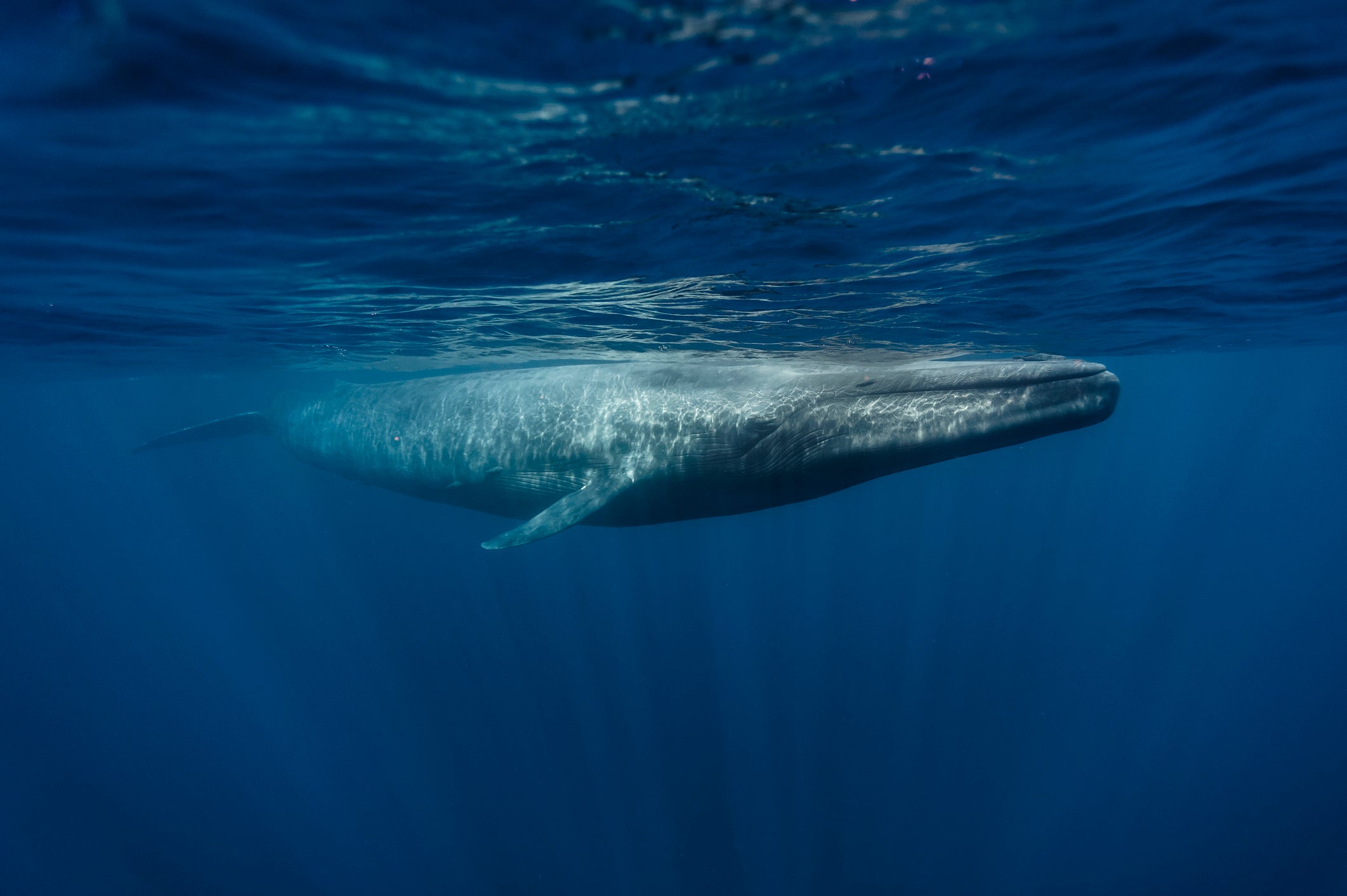Blue whale singing patterns predict migration, study finds
As species embarks on annual journey to warmer waters, their singing becomes less nocturnal, writes Harry Cockburn


In the immense vastness of the ocean, sound is everything for whales - allowing them to communicate over titanic distances, and in some species, target food through echolocation.
So it is no surprise the largest animal on Earth - the blue whale - is also among the loudest.
Blue whales emit an extraordinary array of different sounds, from bone-shaking bass blasts, to burbling electric synthesiser-style pitch swoops.
“Sound is a vital mode of communication in the ocean environment, especially over long distances,” said William Oestreich, a graduate student in biology at Stanford University’s Hopkins Marine Station.
“Light, or any sort of visual cue, is often not as effective in the ocean as it is on land. So many marine organisms use sound for a variety of purposes.”
Blue whale vocalisations can be detected by other whales at least 60 miles away.
But despite being studied for decades, researchers have only had limited success in deciphering much meaning from their recordings.
Now, by recording both individual whales and their greater populations in the Northeast Pacific, researchers from Stanford and the Monterey Bay Aquarium Research Institute (MBARI) have identified patterns in the trills and bellows of blue whales which the scientists say indicate when the animals are migrating from their feeding grounds off the North American coast to their breeding grounds off Central America.
“We decided to compare daytime and nighttime song patterns from month to month, and there, in the divergence and convergence of two lines, was this beautiful signal that neither of us really expected,” said John Ryan, a biological oceanographer at MBARI and senior author of the paper.
“As soon as that image popped up on the screen, Will and I were both like, ‘Hello, behaviour’.”
The research team said further analysis of the five years of hydrophone recordings they have could yet reveal new information about blue whale migration, a 4,000-mile journey that ranks among the longest in the world - and which the creatures repeat every year.
Despite their colossal size and the distance these whales travel, scientists still know very little about their behaviours, such as how they are responding to changes in the ecosystem and food supply from year to year.
But being able to predict the travel of whales along this important route could also help prevent ship strikes.
To capture whales singing solo and in chorus, the researchers used underwater microphones known as hydrophones, and tags which were placed on individual whales.
In 2015, MBARI deposited a hydrophone 18 miles off the Monterey coast, 3,000 feet (900 meters) below sea level. The hydrophone is wired to their MARS undersea cabled observatory, which provides it with power and communications and has recorded the deep ocean soundscape almost continuously for more than five years.
By focusing on the whale song wavelengths in the hydrophone data, the researchers noticed a distinct change over several months.
Through the summers, the whale “arias” grew louder and were sung mostly at nighttime. Over the five years of data, the whale chorus was loudest around October and November, and singing happened more at night.
But following each annual peak in song activity, as the whales began to depart for warmer waters, singing then became more of a daytime activity.
While daytime versus nighttime differences in singing behavior had been noted in previous research, the whale-borne tags, developed by the lab of Stanford biologist Jeremy Goldbogen, helped explain what these 24-hour patterns and their inversion in late autumn could mean.
Fifteen tags tracked the sounds of their carriers through accelerometer measurements - which monitor vibrations - and, in some cases, integrated hydrophones. In the summer, the whales spent much of the daytime feasting, bulking up for the long journey ahead and reserved their musical interludes for nighttime. When the time came, migration was again accompanied by daytime songs.
"In the hydrophone data, we saw really strong patterns over this enormous spatial domain. When we saw the exact same pattern on individual animals, we realized that what we'd been measuring over hundreds of kilometers is actually a real behavioral signal - and one that represents the behavior of many different whales," said Mr Oestreich.
“As an ecologist, it's very exciting to observe so many whales, simultaneously, using one instrument.”
This research team said the study could lay the groundwork for predicting blue whale migration based on the transitions between the different song schedules, and that such forecasts could be used to warn shipping lanes further down the coast, like air traffic control but for the ocean.
The researchers also hope further analysis of the acoustic data will reveal more about whale behavior in response to environmental changes, such as warming waters and food supplies.
Join our commenting forum
Join thought-provoking conversations, follow other Independent readers and see their replies
Comments

Bookmark popover
Removed from bookmarks